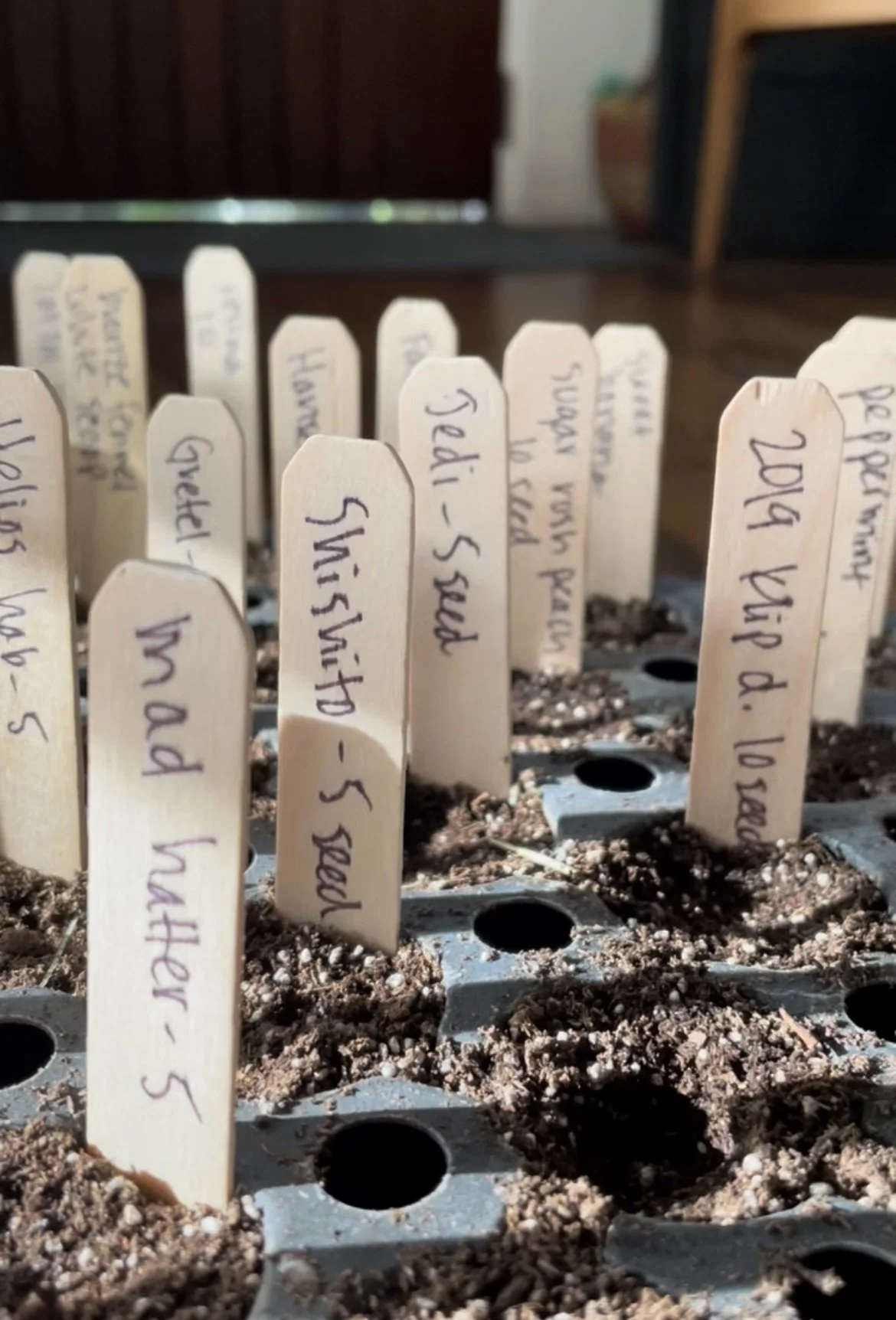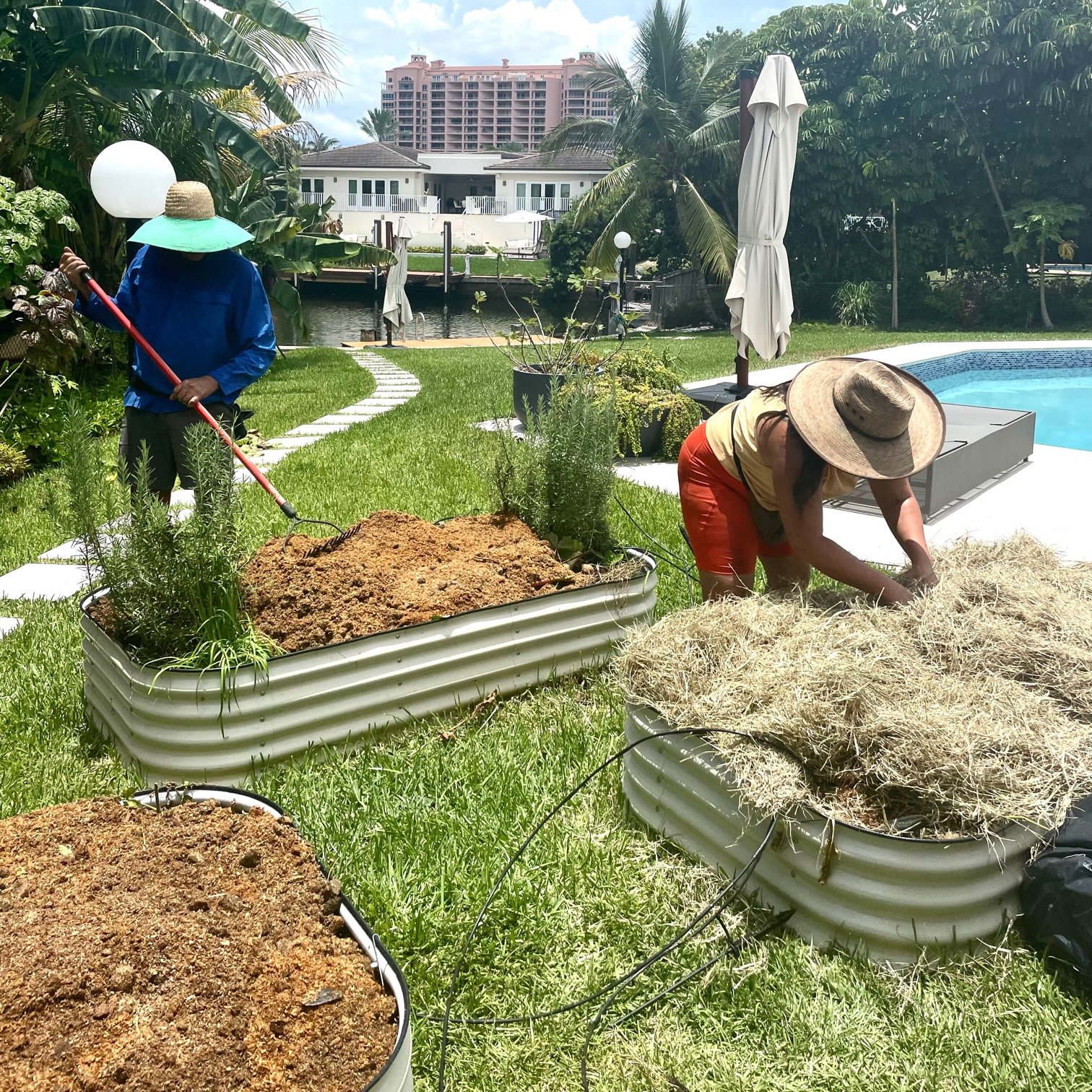August Gardening: Too Early or Too Late? Neither!
One thing we've noticed about gardening in August is that people either think they're too early to start gardening or too late to be planting things. Neither of those statements are true because gardens are cyclical, just like so many other things in nature. That means it's never too late or too early, depending on what you are doing or planting. Is it too early to start your collection of heirloom tomato seeds? yep. But it's definitely not too late to add more fun tropical perennials to your garden. September is our second rainiest month of the year (June is the most rainy) so if you still haven't gotten around to planting more bananas, turmeric and pineapples you can do that anytime through September and they will benefit from the summer rains before our dry season starts.
We have grown to love the unique selection of culinary herbs and spices that thrive in the summer months, like Dominican oregano, African blue basil & garlic chives, most of which will grow year round, not just in the summer. Plant one of these now and they'll likely last years, just like rosemary and sage, which are thought of as winter herbs but since they are "perennials" they grow for years. Culinary herbs tend to stay small to medium in size and so they can be fit into your raised bed, large terra cotta pots, or they can be planted in your landscaping or built in planters. If you're looking for fun plants to add to your garden this time of year check out our roundup of summer friendly perennial herbs.
Dominican oregano is in the "lippia" family and is related to lots of other plants we love, like lantana, Moujean tea and Lippia Alba. If you google this plant you'll quickly get overwhelmed or a bit confused because this plant goes by about 100 different names depending on where you live, and many of those names have the word oregano or thyme in them. This plant isn't related to thyme or oregano at all but it earned nicknames like "Dominican oregano" and "false thyme" because of its culinary uses. When used in cooking you wont be able to tell the difference between this oregano and the more popular and well known Italian and Greek varieties. The plant grows upright into a small shrub (similar to how rosemary grows) so its easier to harvest than the other oreganos that spread and crawl on the ground, and it will last years and years when planted here in South Florida.
Turmeric is a must grow in our opinion, since its a delicious spice, a powerful medicinal plant, plus its absurdly easy to grow in our climate. We plant turmeric rhizomes in the spring and patiently wait for them to sprout out of the ground once it starts raining. Throughout the summer these plants grow like crazy and become big beautiful plants with aromatic tropical leaves you can harvest and use to grill fish or flavor teas. Turmeric can be planted in the ground in compost rich soil or kept in a pot, and they can thrive in full sun or partial shade. While rhizomes can be harvested pretty much anytime (just dig around the base of the plant, find some root and break it off) its best to wait until next spring to harvest the whole plant for maximum yield. Turmerics cousins ginger and galangal also grow easily here in South Florida and we consider them staples in the well rounded culinary summer garden.
Garlic chives are the closest thing to garlic you are going to get to grow here in South Florida, and luckily for us they are delicious, productive and can grow year round. When all else fails, garlic chives survive... Seriously! We have seen garlic chives survive in super neglected and overgrown gardens, and we have patches of them that are over 5 years old at this point. Thanks to their incredibly large and ambitious root systems garlic chives are drought resistant and don't need many nutrients. Harvest your garlic chives by giving them a haircut just above the soil line and 7 days later they will be fully regrown, making them incredibly productive as a summer food crop.
If prepping for fall is more your August style there are a few things on our fall to-do lists already, like testing our seed stash. At the end of every summer we go through our leftover seeds from last season and test them to see if they are still germinating well. We need our seeds to have really high germination rates because we rely on them to make a certain amount of plants for our nursery. While you may not have such high standards for your leftover seeds its still good to try and figure out which ones will be successful and which wont before fall. To test our seeds we plant 10 of each seed type in one cell of a seeding tray and germinate the whole thing inside. It's important to germinate the tray indoors because it's too hot out for all the varieties to germinate at their peak ability. Your plants will get leggy but don't sweat it, this whole tray is destined for the compost pile, not your garden. 10 - 14 days after you started your tray all of your plants should have fully germinated and you can count how many made it. 8 of out 10 seeds germinated makes the germination rate of that variety 80%, which is pretty good. Anything below 60% and we either compost the seeds or double how many seeds we use, since we know about half of them wont make it. Make sure to make notes about each plant on the seed packet so that when you go to use them in the fall all the information is right there for you.
When it comes to buying new seeds we definitely have some favorite companies and websites to share with you. Johnnys Select Seed in Maine is our number one most favorite seed company. The main reason why we love them is because they serve farms more than they do gardeners, and so they sell larger quantities and farm friendly varieties too. We also buy regularly from True Leaf Market, Territorial Seed Company, Kitazawa Seed Co, and Wild Garden Seed. When it comes to specialty seed companies we suggest you shop with them with some reserve, unless you are looking to really challenge yourself (and your budget). Our favorite rare seed companies are Baker Creek Heirloom Seed, Strictly Medicinal, and True Love Seeds. Our biggest tip for seed shopping is make sure to choose mostly tried and true varieties for your growing zone and then sprinkle in some wild ones!
If you haven’t done anything in your veggie bed this summer, we get it. Its hot and muggy out there, and the mosquitos! August is a good time to get out there and make up for the lost time by pulling out and composting spent spring crops and then prepping your soil for fall. To prep your soil we suggest adding a layer of fresh topsoil, some horse bedding or manure if you can get it (try going to some stables, they are used to gardeners asking for their litter) or mulch, and then topping that all off with a thick layer of hay. The hay will protect your new soil & manure from getting weedy or drying out, while still allowing air and moisture in, which will keep your precious soil life alive.



